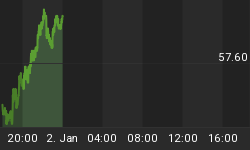Be careful what you build. If it gets too big, you may become a billionaire, but there’s a chance you end up in an increasingly popular club for entrepreneurial geniuses who have been ousted from their own companies.
The latest is WeWork’s Adam Neumann, who has been summarily dismissed as CEO after a horribly botched IPO.
In all fairness, the CEO of the office-sharing startup even voted against himself, according to reports, but it was likely to happen with or without his own vote. Neumann will remain non-executive chairman, but has had to forego majority control of the company he co-founded.
And the coup to remove him was launched by his biggest backer--SoftBank CEO Masayoshi Son.
Support is anything but sacred in this work of big new startups throttling toward unicorn status and then hopefully breathtaking IPOs.
In its wake, the Billionaire Boys Club of Ousted Executives is growing rather larger in number but here are 5 for starters:
#1 Rob Kalin (Etsy)
Rob Kalin, the founder this New York-based online handmade and vintage marketplace, stepped down as CEO in 2011. It wasn’t his first brush with club membership, either. In 2008, he was temporarily replaced by Maria Thomas and then won his CEO spot back in 2009 when Thomas left. In 2011, he was pushed out amid concerns about whether he could continue to grow the business. Kalin helped build Etsty in 2005, spectacularly turning what was a rather hodgepodge community of arts-and-crafts dealers into a major business that handled $400 million in shares and over $40 million annual revenues by 2010. But the moral of the story is this: If you build a brilliant business, you’d better be able to keep growth it phenomenally, for ever.
#2 Sandy Lerner - Cisco
American businesswoman and philanthropist Sandy Lerner started Cisco with her ex-husband, Leonard Bosack, in 1984. They built it from scratch to boast the first router to connect an entire computer system at a local school.
Cisco sold its first router in 1986 and by the end of 1987, the fledgling company was recording sales worth $250,000 each month. They were short of cash and decided to make a deal with the famed venture capitalist Don Valentine of Sequoia Capital to fund their company, who appointed John Morgridge as the CEO of the company.
In 1990, they were both fired when Cisco started to take the world by storm. Eventually, they gave up and sold out $170 million worth of Cisco shares.
#3 Travis Kalanick- Uber
In June 2017, following a series of scandals and pressure from major shareholder Benchmark Capital, Kalanick agreed to resign as CEO of the ride-hailing giant, that he helped found in 2009 and build into a transportation colossus. Kalanick's exit came under pressure involving Uber's investors, including one of Uber’s biggest shareholders, the venture capital firm Benchmark.
Kalanick’s ouster coincided with months of questions over the leadership of Uber. The company has been exposed this year as having a workplace culture that included sexual harassment and discrimination, and it has pushed the envelope in dealing with law enforcement and even partners.
#4 Steve Jobs - Apple After creating the iconic brand, Jobs was forced out of the company he had built into a billion- dollar colossus, and this is probably the most famous member of the Billionaire Ouster Club.
Related: The Billion-Dollar Chinese Business Of Forced Organ Donations
"I was out -- and very publicly out," he recalled in a commencement speech at Stanford University. "What had been the focus of my entire adult life was gone, and it was devastating." He added, "I was a very public failure."
Apple was founded in 1976 by Steve Jobs and Steve Wozniak. In 1981, Apple Computer went public. Just two years later, Apple made it onto the Fortune 500 list and Jobs recruited John Sculley, the head of Pepsi-Cola, to be its new chief executive.
Jobs was Apple's chief visionary, a role that put him in charge of the team developing Apple's next revolutionary product, the Macintosh computer. The Mac debuted in 1984 to rave reviews but disappointing sales, putting a financial strain on the company and straining the relationship between Jobs and Sculley. In the spring of 1985, Apple's board sided with the CEO, removing Jobs from his command of the Macintosh group. Later, he would return to Apple and as its savior. He passed away in October 2011.
#5 Aubrey McClendon-Chesapeake Energy
McClendon founded Chesapeake Energy in 1982. He was once the highest paid CEO of all S&P 500 Chief Executives and a stunning success story. He brought the company at least 20% returns over 2 decades. He as a pioneer of the fracking boom who grew Chesapeake into a $37.5-billion company.
But then he was accused of rigging bids for oil and gas drilling rights and then gas prices plummeted and shareholders revolted in one of the most dramatic ouster stories out there.
McClendon stepped down as chairman in 2012, and then as CEO in 2013 amid scrutiny over allegations that he had taken out more than $1 billion in loans against his personal stakes in the company's wells. Chesapeake subsequently revealed that it was the subject of an SEC inquiry, and announced that the program through which McClendon acquired his stakes would be ended prematurely. McClendon died in a car crash in 2016.
By Michael Kern for Safehaven.com
More Top Reads From Safehaven.com:
















